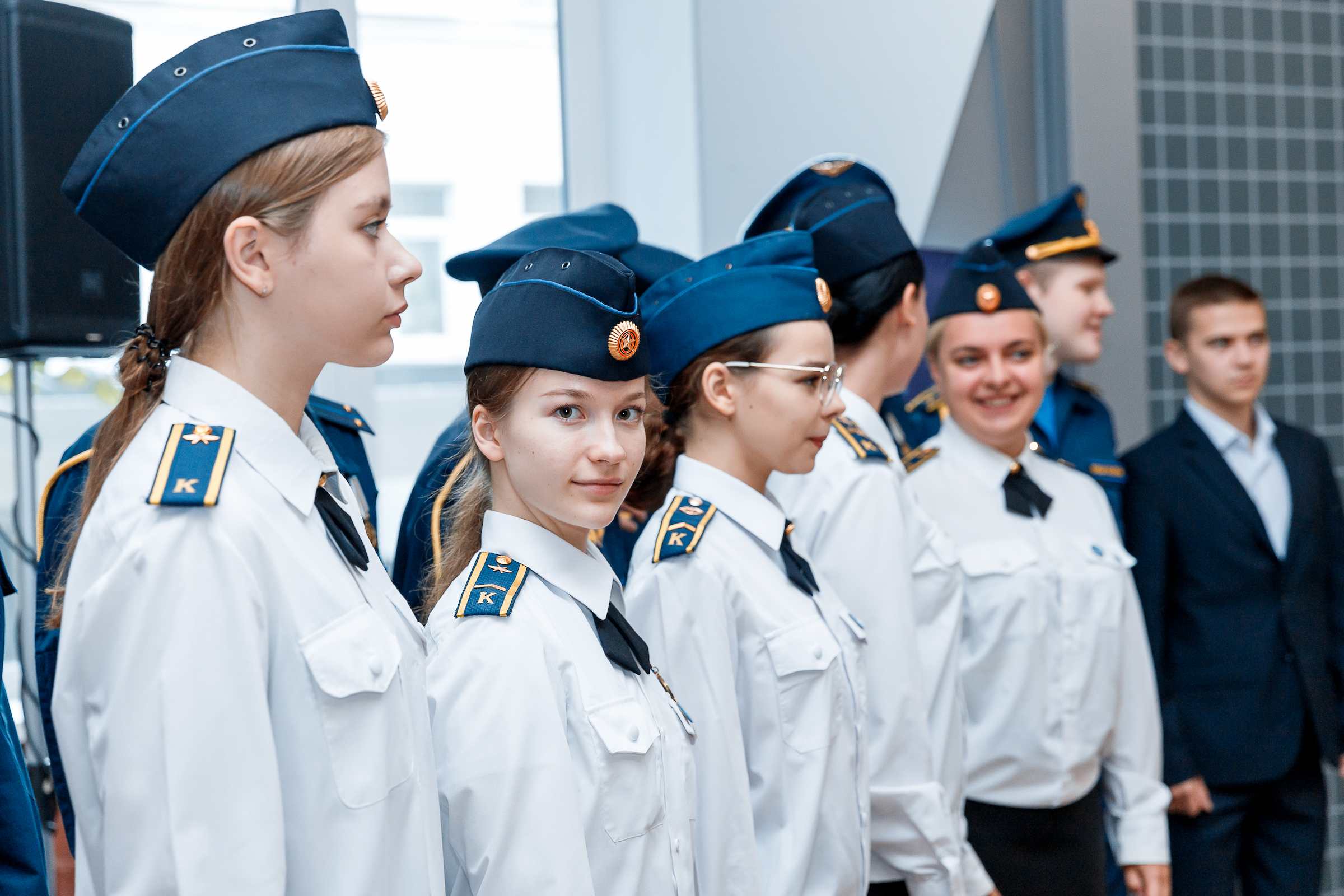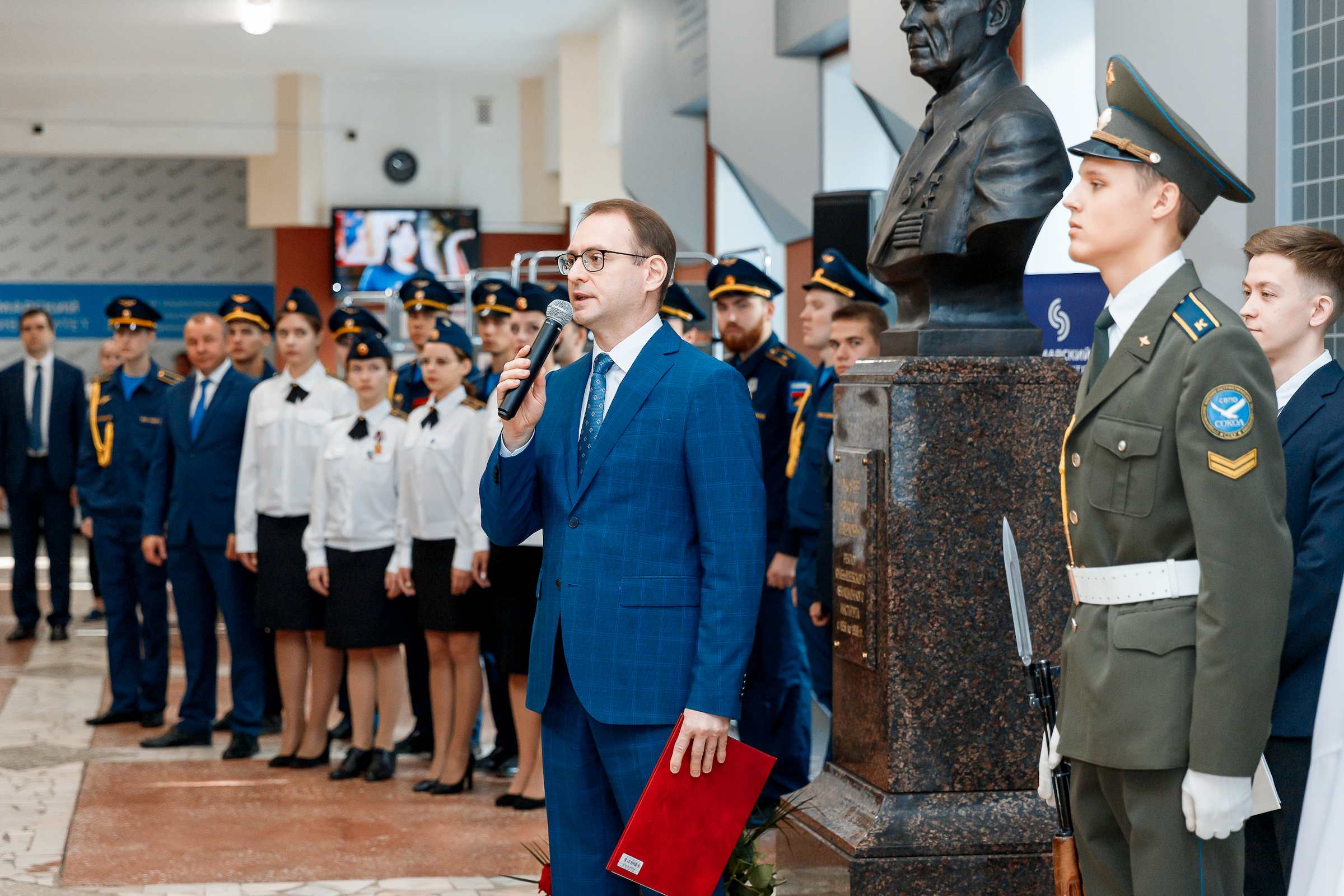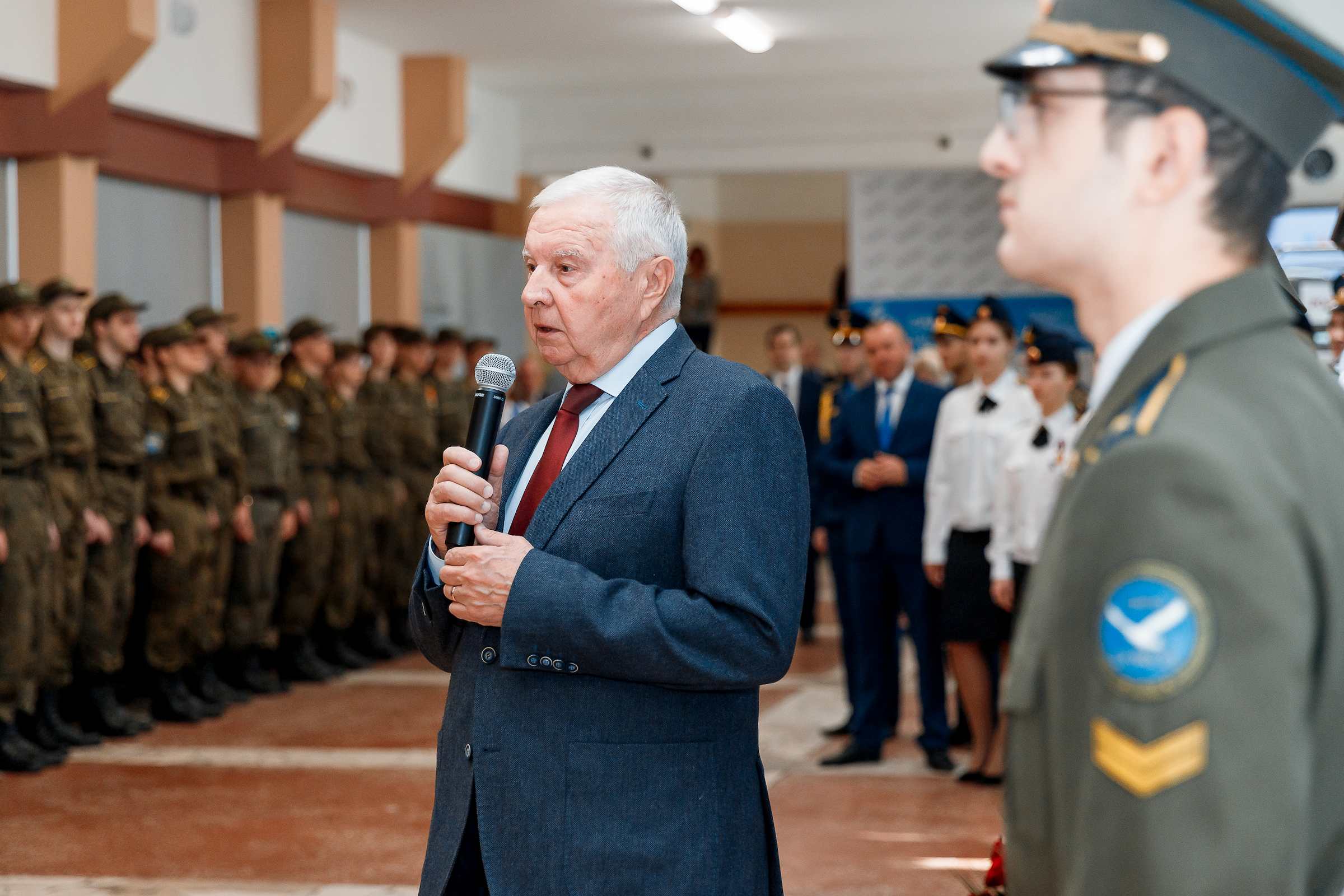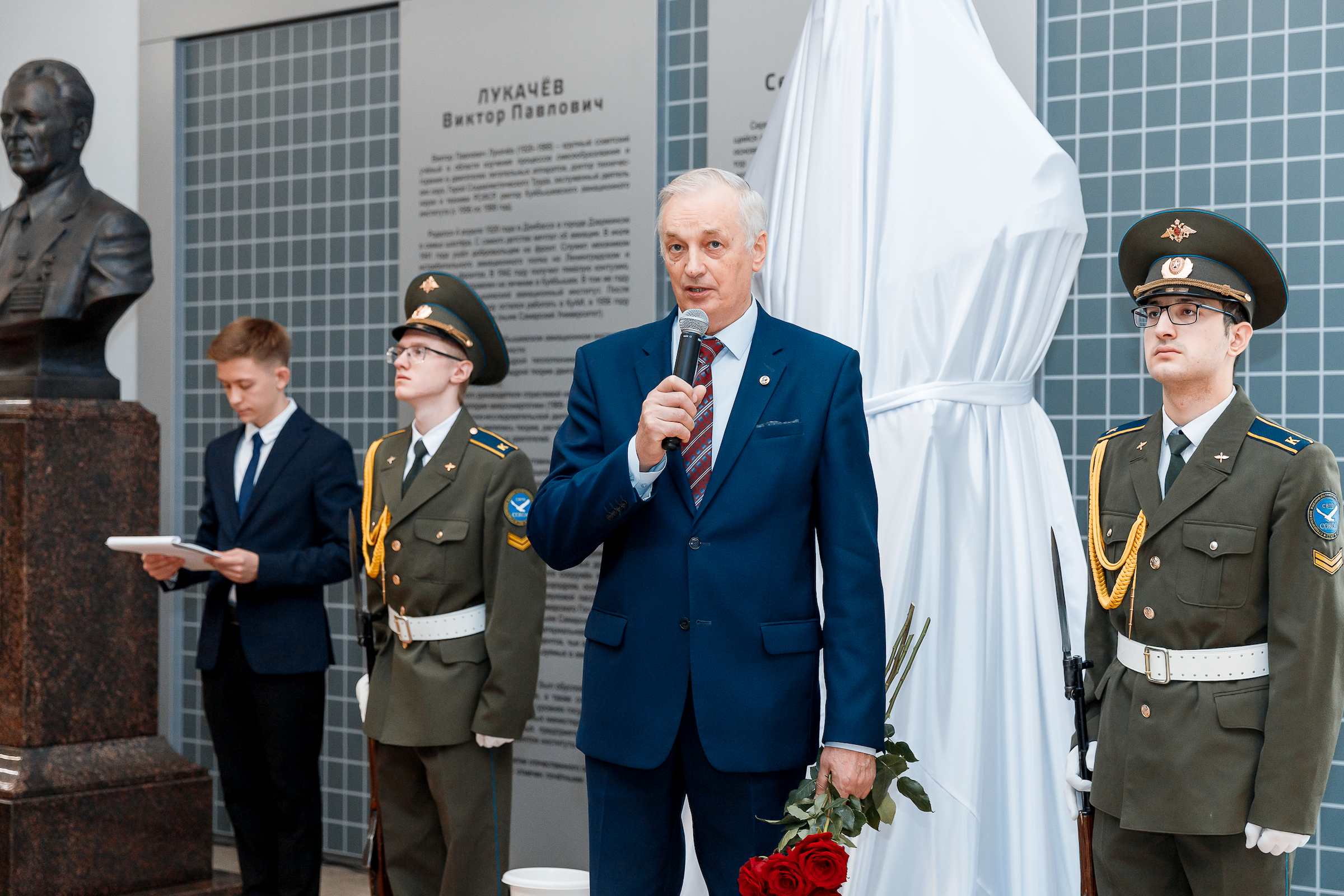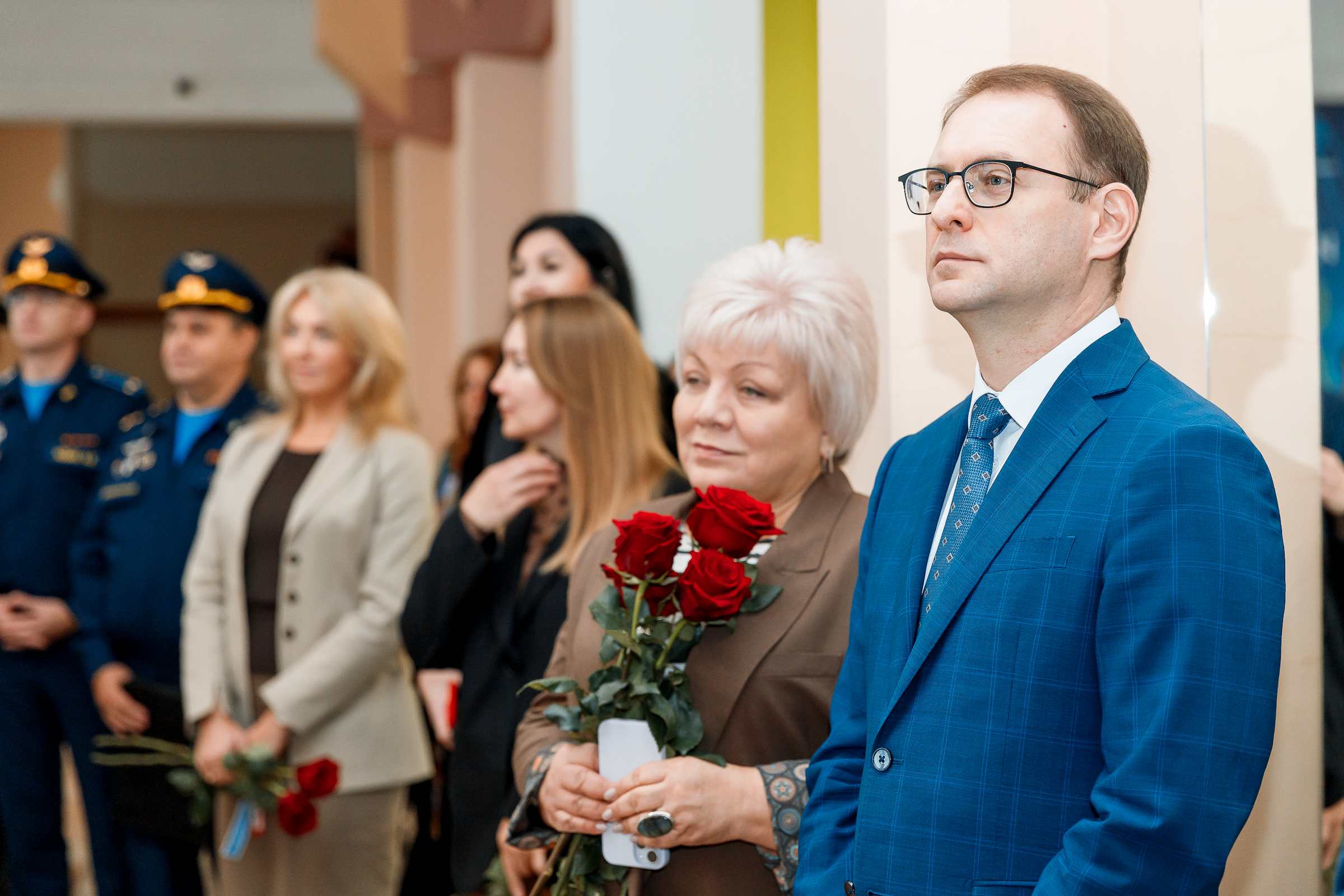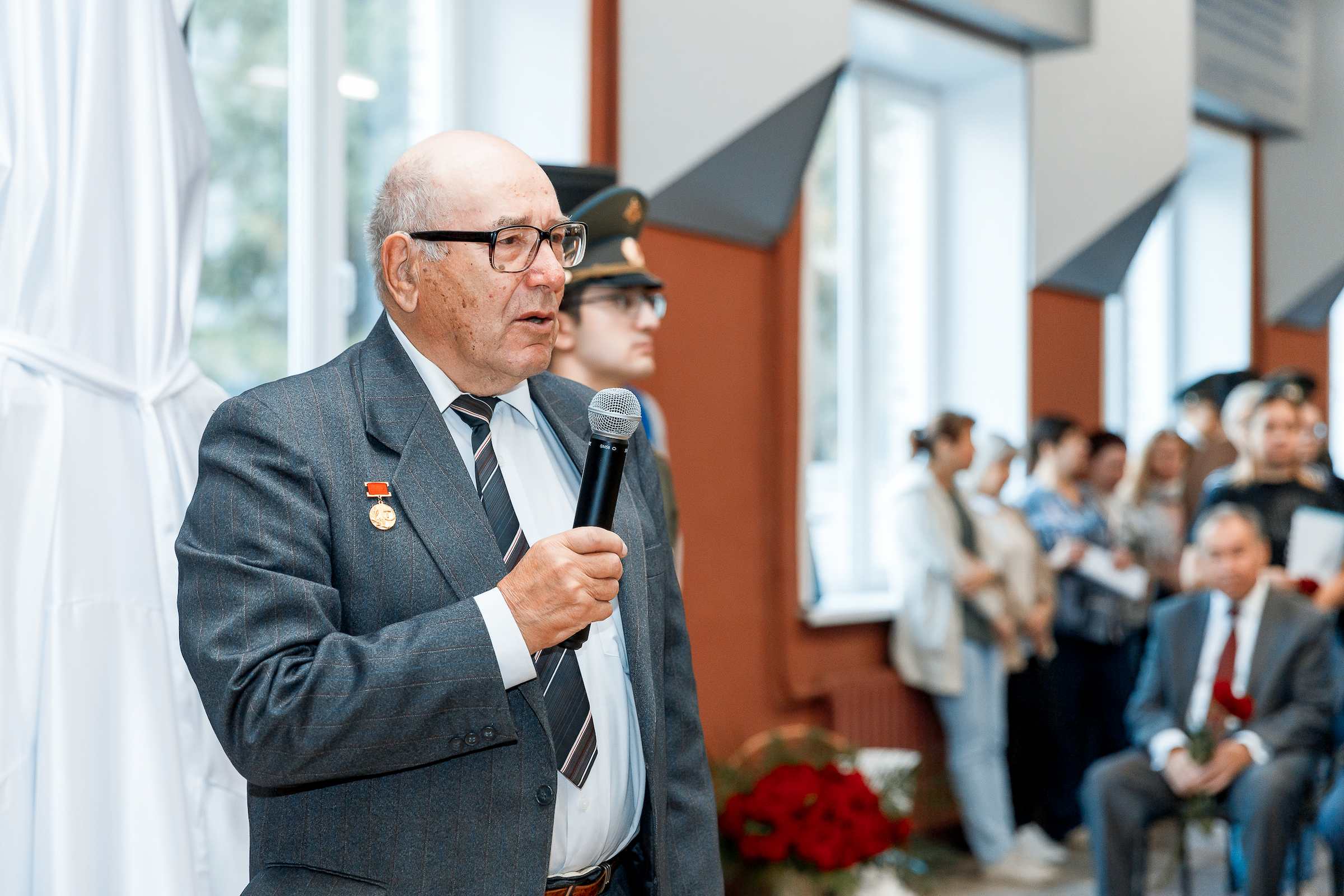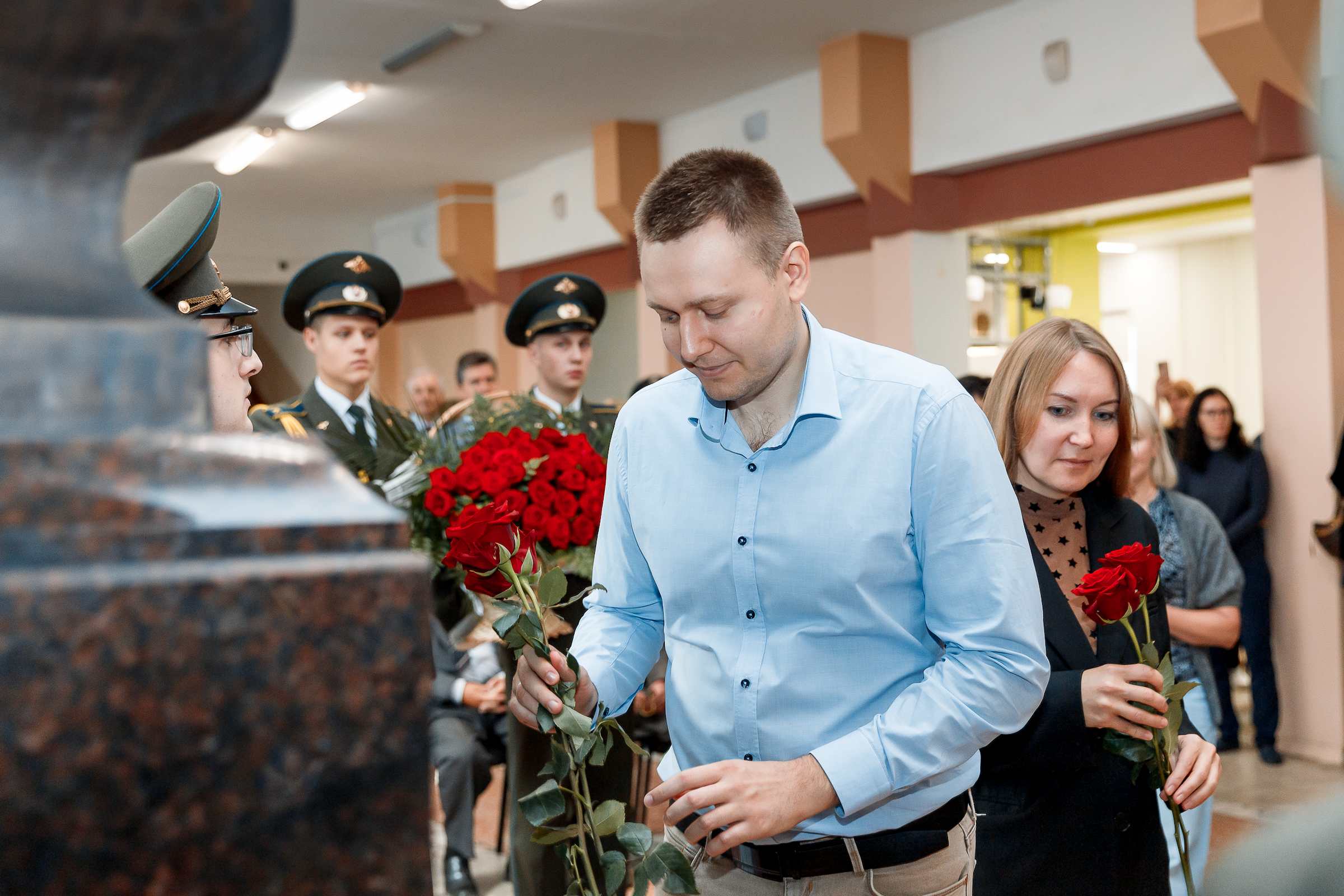On the opening day of the memorial bust, people, for whom development of aviation and cosmonautics has become their lives’ work, gathered at the University. There came also the industry veterans who personally knew Sergey Pavlovich Korolev.
“This is a very considerable event for everyone of us,” said Vladimir Bogatyrev, Rector of the University, addressing the audience. “It is important to remember the history of great achievements and understand: major discoveries, outstanding inventions are outcomes of hard work, they are created with love for the Motherland. This is the only way to benefit Russian society and humanity as a whole. At our University, there are memorial busts of two titans of the 21st century — Viktor Pavlovich Lukachev and Sergey Pavlovich Korolev. I am grateful to the president of the University, Academician of the Russian Academy of Sciences Viktor Aleksandrovich Soifer, who proposed to erect a monument to the great designer, as well as to the deputy of the State Duma of the Russian Federation Leonid Yakovlevich Simanovsky and the University employees who donated funds for creating the bust.”
The rector also thanked Senator Farit Mukhametshin for his attention to the event, who contributed to signing in Moscow the day before the agreement between the University and the Memorial Museum of Cosmonautics, which includes the legendary house in 28 Ostankinskaya Street, where Sergey Pavlovich lived. Due to this agreement, the University will have the opportunity for exchanging digitized materials about the great designer with the Moscow museum.
Viktor Soifer, President of the University, and Evgeny Shakhmatov, Scientific Director of the University, noted at the opening of the monument that both Viktor Pavlovich Lukachev and Sergey Pavlovich Korolev made the USSR a great space power during their lifetime. And their life path and outcomes of their work still serve as an example and open a great way for a new generation of future scientists and designers.
At the opening of the monument, Valentin Pavlov, Chairman of the University’s Council of Veterans, reminded everyone what a joyful event for students was the news of naming the institute after the great designer in February 1966. 57 years ago, just a month after Sergey Pavlovich Korolev’s death, the Central Committee of the CPSU and the Council of Ministers of the USSR issued the resolution “On Commemorating the Memory of Academician S.P. Korolev” and assigning his name to the Kuibyshev Aviation Institute (KuAI). This was the way of commending merits of the University’s researchers and teachers in development of the aviation and space industry.
A few years before this event, in 1959, in interests of the rocket and space industry, training engineers in the then new for the country specialties started: “Rocket Engineering,” “Rocket Engines,” “Radio Equipment Design and Production.” Scientists and specialists of the Institute took part in developing the production of launch vehicles and spacecrafts, in creating the rocket and space complex intended for providing the manned flight to the Moon, and other projects.
Sergey Pavlovich’s life and work are closely related to the city of Kuibyshev. It was here, on the Volga land, that the most important projects of the chief designer — production of intercontinental ballistic missiles R-7, R-7A, R-9A, launch vehicles “Vostok,” “Voskhod,” “Molniya,” and spacecrafts of the “Zenit” series — were implemented. The “lunar” super-heavy rocket N-1 was also produced here.
Deputy Chairman of the Council of Rectors of Universities of the Samara Region, Director of the Samara Branch of the Moscow City Pedagogical University Galina Kozlovskaya spoke at the opening of the bust just about importance of preserving historical memory, about development of the engineering school.
“Memory passes through people’s lives, influencing their fate. Since 1958, Sergey Pavlovich Korolev often came to Kuibyshev and lived at 200 Chapaevskaya Street, inApartment No. 9. And our family lived in the neighboring apartment No. 10,” she told.
Mikhail Shum, a veteran of the Progress RCC, also knew Sergey Korolev and worked together with him. “Every meeting with him resulted in the feeling of emotional uplift. Sergey Korolev always supported young people, encouraged them. He was an enthusiast who devoted his whole life to the rocket and space industry.
At the end of the ceremony, the honor of removing the veil and opening the bust of Sergey Pavlovich Korolev was given to excellent students, cadets of the military training center. On the same day, the exhibition dedicated to the life and work of the great designer opened at the Aviation and Cosmonautics Museum of the University.
For reference:
The era of our country’s first achievements in applied cosmonautics is associated with the name of the outstanding scientist and designer in the field of rocket and space technology, twice Hero of Socialist Labor Sergey Pavlovich Korolev. Under the scientist’s guidance, the breakthrough into outer space was made and its research began. The first high-altitude geophysical rockets, the first artificial satellite of the Earth were created, the first human flight into outer space took place.
As Chairman of the Council of Chief Designers of the country, Sergey Pavlovich Korolev provided from 1946 to 1966 technical guidance and coordination of the work of enterprises and organizations of the USSR on rocket, rocket-space and space projects developed under the leading role of the Special Design Bureau No. 1 headed by him.
 RU
RU  EN
EN  CN
CN  ES
ES 

